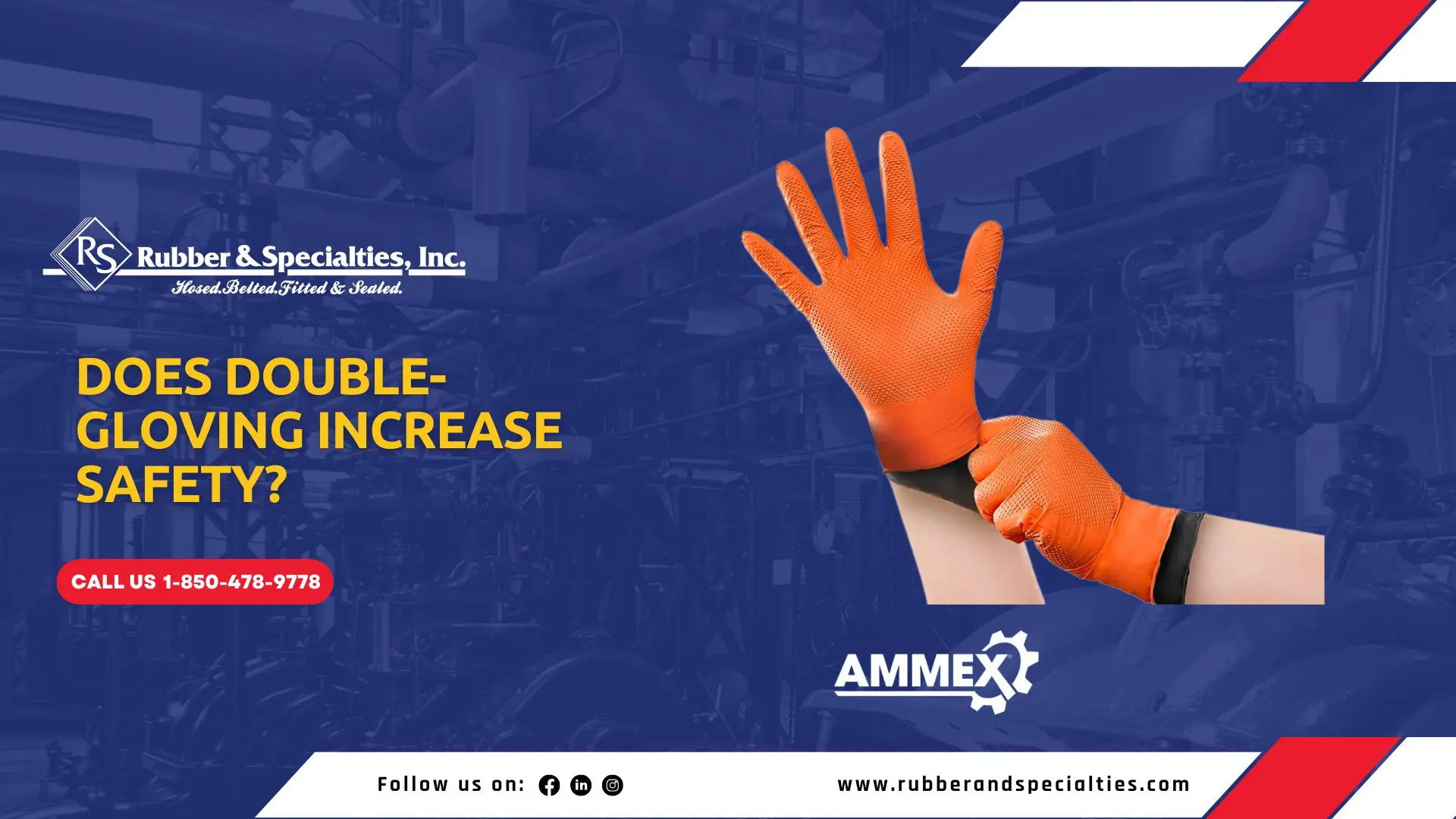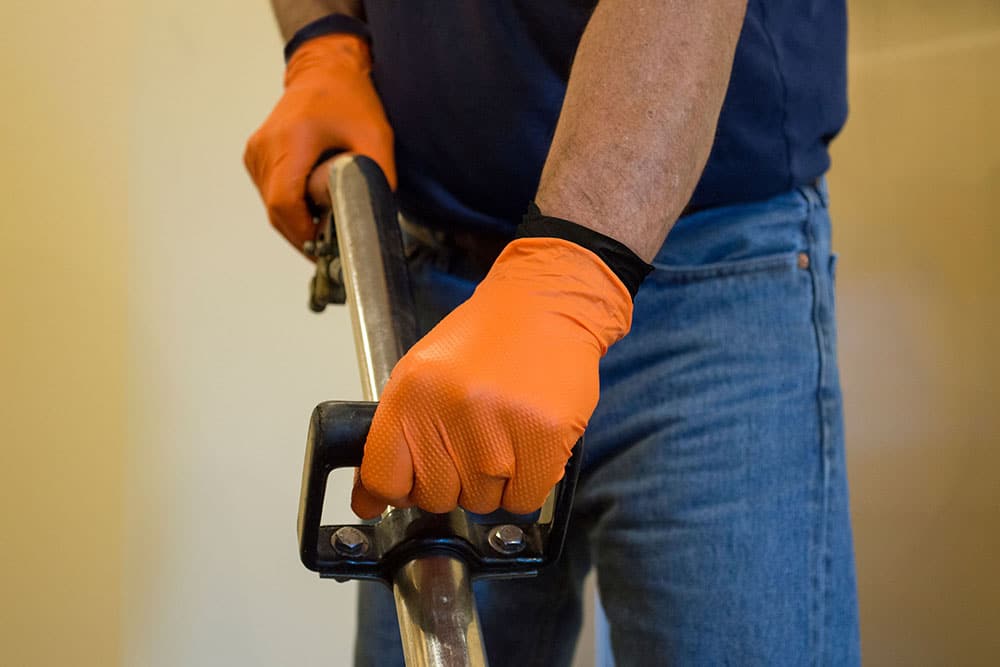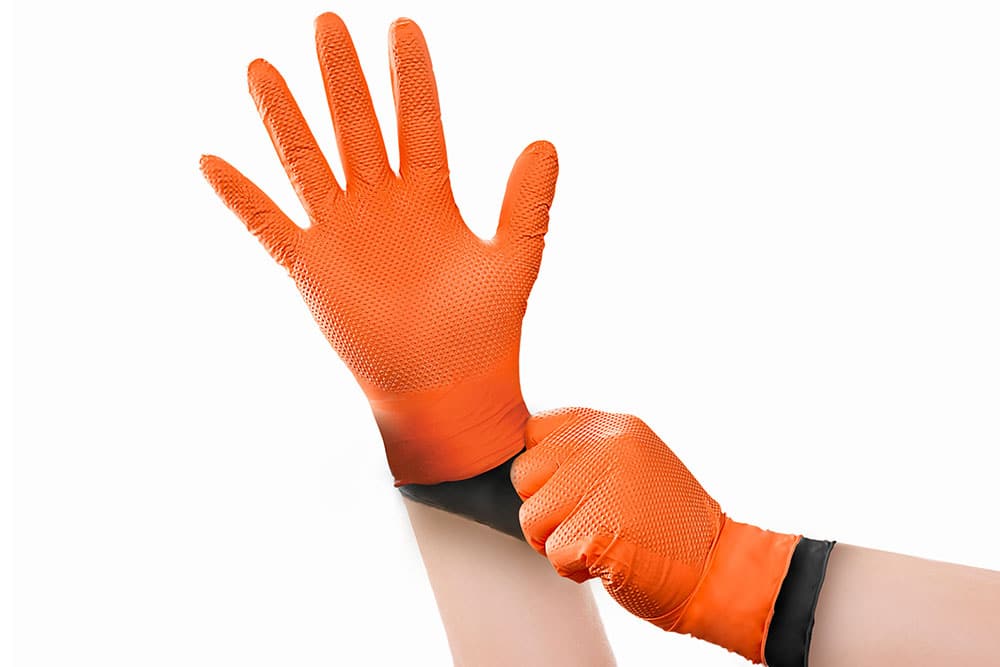
Does Double-Gloving Increase Safety?
In medical use, double-gloving—wearing one pair of gloves over another—is commonplace.
Healthcare professionals, always looking for extra protection from bloodborne pathogens, germs, viruses, and bacteria, have long double-gloved when the fear of contamination is high. In the early days of the pandemic, even with widespread glove shortages, an extra pair of gloves was seen not as an extravagance but a necessity.
While double-gloving is less prominent in industrial use than in medical, it serves the same purpose: delivering extra protection. Latex and nitrile gloves complement one another, with each best suited for certain substances. (Check out our chemical resistance chart for specifics.)
Double-gloving provides a secondary layer that can effectively minimize the risk of skin irritation, dermatitis, and other health issues. If the outer glove becomes compromised, the inner glove remains intact, maintaining a barrier between the technician’s skin and hazardous substances.
There are several ways to go about this. Start by wearing a heavy-duty latex glove like Gloveworks Ivory Latex (ILHD), an 8-mil glove that stands up to a variety of hazards, on the outside. Pair it with light-duty nitrile X3 Black (BX3) and Blue Nitrile (X3), both 3 mils thick, to keep latex away from the skin, where it can cause allergic reactions in some people.

If you want more heft, turn to Gloveworks Nitrile with Raised Diamond Texture in 8-mil orange and green as well as 6-mil black and royal blue. The texture, with 60 percent more surface area, channels away liquids for a grip that is difficult to beat. For the bottom layer, try either of the X3 gloves or the 3-mil X3 Ivory Latex (LX3), as long as you have no concerns about latex allergies.
If you are wearing padded or armored work gloves on top, both the nitrile and latex gloves will help keep chemicals away from your skin while the outer gloves offer concussive protection.
Automotive technicians are, of course, frequently exposed to harsh chemicals, oils, lubricants, and other substances harmful to the skin. Single-gloving offers solid, dependable protection, but it can be insufficient for prolonged exposure to these chemicals.
A great fit in lots of industries
Double-gloving is also common in various other industrial settings, including manufacturing, pharmaceuticals, and food processing. In manufacturing, workers frequently handle materials that can be harmful or messy, such as adhesives, resins, and paints. Double-gloving helps in preventing skin contact with these substances.
In public safety use, double-gloving best protects an officer from biohazardous materials at an incident scene. It can also prevent the inadvertent contamination of evidence. By retaining a single pair of gloves against your skin and changing only the top layer, there is a reduced risk of introducing unwanted foreign materials.
Unsure which gloves you need? Talk to your glove distributor about your particular situation. There is a lot of nuance involved, and it’s not a one-size-fits-all solution.
Call 1-800-274-7354 or visit AMMEX’s website for more.


